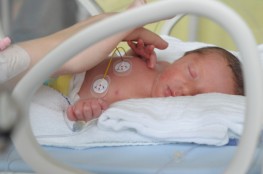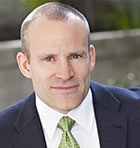
Negligent medical care during pregnancy, delivery, or soon after birth can result in catastrophic injury to the baby that can leave the child with severe impairments and parents facing the reality that their child may never be capable of caring for themselves. Medical errors resulting in birth injury can mean huge expenses that may include multiple surgeries, physical therapy, medication, ongoing treatment, and a lifetime of attendant care for the injured child.
In many cases, parents and physicians know right away when a child is born with a serious birth injury. Other times, serious birth injuries can go undetected until their signs and symptoms begin to appear later in a child’s life, often in the form of delayed or abnormal development.
If you think your child was seriously injured at birth, no matter what your child’s age is now, we can help. We can give you information about what happened, what to look for, and how to protect your rights.
We Know How To Help Washington Victims Of Serious Birth Injuries
Contact one of Tinker Law Firm, PLLC’s birth injury attorneys today for a free initial consultation. Our attorneys are passionate advocates for injured children and we have the resources and knowledge to investigate your case, give you objective information about what happened, and pursue compensation for you and your child. We are well-known for our proven experience and results in helping birth injury victims and their families. From anywhere in Washington, you can reach us by simply calling (206) 752-4366 or by using our online form.
Cerebral Palsy
Cerebral palsy is a general term. It refers to several disorders that can arise after a baby’s brain is damaged or fails to develop properly. In some cases, cerebral palsy is caused when an obstetrician or other healthcare provider makes a preventable mistake that injures the child shortly before, during, or after the child is born.
The symptoms of cerebral palsy typically appear as problems with a child’s movement, senses, posture, muscle coordination, and intellectual abilities.
In all cases, it’s important to remember that cerebral palsy birth injuries might not be detected right away. In fact, they might not show up until years later, when the child begins to show symptoms of delayed or abnormal development.
Cerebral palsy is a permanent disorder that doesn’t get better or worse. In most cases, that means it’s not life-threatening. It also means that cerebral palsy victims can suffer a lifetime of serious disabilities, along with all of the associated emotional and physical hardships, as well as substantial ongoing medical costs.
If you’re worried that your child is suffering from cerebral palsy, you need answers to these important questions:
- What are the symptoms of cerebral palsy? How can I tell if my child has it?
- Why might my child have cerebral palsy – what causes it?
- Are there different kinds of cerebral palsy?
- What about treatment options for cerebral palsy?
- What are my family’s legal options?
- Are there resources available for my child with cerebral palsy, and our family?
Brachial Plexus Injuries
Brachial plexus injuries are another type of potentially serious birth injury. The brachial plexus is a bundle of nerves that runs from a person’s spine to the shoulder, and then to the arm and hand. The nerves in the bundle carry signals between the person’s brain, hand, and arm.
The brachial plexus can be injured if the nerve bundle is stretched or torn. For babies, this sometimes happens because of complications at birth, such as a lengthy delivery or improper positioning of the baby’s body in the birth canal. A physician’s improper efforts to assist delivery also can wedge the baby’s shoulder against the birth canal, pull on the baby’s shoulders, or press on the baby’s arms, resulting in permanent nerve damage to the brachial plexus.
Brachial plexus injuries usually cause weakness or paralysis in the hand or arm below the injured shoulder. The specific name of given to the injury depends upon what portion of the arm is affected:
- If only the baby’s upper arm is affected, the injury is called a brachial plexus injury.
- If the baby’s upper and lower are are both affected, the injury is called Erb’s palsy, or Erb’s paralysis.
- If the baby’s hand is affected, the condition is known as Klumpke’s palsy, or Klumpke’s paralysis.
The signs and symptoms of a brachial plexus injury usually appear at or shortly after birth. Often, the baby might not move its arm or hand, the arm or hand might show signs of weakness, or the infant might not have proper reflex responses below the affected shoulder.
Treatments are available to help infants who suffer brachial plexus injury, depending on the type and severity of the condition.
If Your Child Is Suffering From Cerebral Palsy Or Another Serious Birth Injury, Don’t Delay In Seeking Help
Any child suffering from a serious birth injury stands the best chance of maximum recovery with early intervention and treatment. This means a comprehensive medical examination to determine the extent of the child’s injury, followed by medical treatment and therapy focused on the child’s specific needs, all with a goal of improving the child’s independence and quality of life.
Serious birth injuries like cerebral palsy can result in substantial costs for an injured child’s lifetime care and treatment. If a physician, hospital, clinic, or other healthcare provider is responsible for your child’s serious birth injury, you may have a legal claim for compensation. Getting that compensation can make an enormous difference in the quality of care available for your child, while at the same time helping to protect your family’s financial security.
That’s where the Washington birth injury attorneys at Tinker Law Firm, PLLC can help.
Tinker Law Firm, PLLC’s experienced birth injury lawyers have a proven record of getting results for birth injury victims and their families. We’ve recovered millions of dollars in compensation for victims of serious birth injuries. We’re known, respected, and trusted for our handling of serious and complex birth injury cases.
Contact Our Birth Injury Lawyers Today
Please contact us today for a free consultation. We’ll explain how we can put our dedication and experience to work for you. From anywhere in Washington you can reach us to schedule a consultation about your case by simply calling (206) 752-4366 or by using our online form.
FAQs
Birth Injury FAQs
What is the difference between a birth injury and a birth defect?
A birth defect occurs prior to birth and may be caused by genetic abnormalities, maternal infection, alcohol and drug use during pregnancy, or by an unexplained failure of the fetus to develop properly. A birth injury occurs during the labor and delivery process. Birth injuries are sometimes the result of medical negligence.
What are the causes of birth injuries?
Birth injuries have two primary causes: trauma and hypoxia. Hypoxia refers to deprivation of oxygen to the fetus. Trauma refers to physical wounds to the body resulting from force.
How can I tell whether my child suffered a birth injury?
If you think your child may have suffered a birth injury, ask yourself whether any of the following factors played a role in your child’s birth. These factors don’t always mean that a birth injury occurred, but they raise a warning flag that a birth injury might have happened:
- You had an extended labor or other delay in delivery.
- Your baby experienced seizures within hours of delivery.
- There was an unexpected need for a Caesarean delivery (C-section).
- Your doctor had to use a vacuum extractor to aid delivery.
- Your baby had concerning heart rate patterns during labor.
- Your baby was blue or gray at birth.
- A previously unrecognized infection was discovered.
- Your baby spent time in a neonatal unit.
What are common types of birth injuries?
Trauma, nerve damage, and brain damage are common birth injuries. Damage to the brain and nervous system can cause cerebral palsy, which is a group of non-progressive disorders affecting brain and nervous system function, including hearing, learning, seeing, moving, and thinking. Damage to the brachial plexus nerves can cause Erb’s palsy or Klumpke’s palsy, which are characterized by limited feeling and mobility in the shoulder, hand, and arm.
What is the prognosis for a child with birth injuries?
The prognosis for a child injured during birth varies. Some birth injuries, such as cerebral palsy, are not curable, but symptoms can be treated and managed to varying degrees depending upon the child’s level of impairment. Other birth injuries, such as Erb’s palsy, may be treatable with appropriate medical intervention.
How can I determine if medical negligence caused my child’s birth injury?
The child’s pediatrician is often focused on caring for the patient, and may not be comfortable or knowledgeable in discussing whether an injury may have been caused by another health care provider’s negligence. An experienced medical malpractice attorney can assist parents in obtaining and reviewing medical records. Attorneys also consult qualified medical professionals who are not personally involved in the patient’s care, for assistance in determining the likely causes of the birth injury.
My child was born several years ago. Is it too late to make a claim for my child’s birth injuries?
In general, birth injury and other medical malpractice claims in Washington must be brought within three years after the negligent medical error. It’s very important to remember, though, that the deadline for filing suit can vary based on the specific circumstances of the case.. Even if your child was born more than three years ago, you may still have a legal case. Talk with an experienced birth injury attorney as soon as possible.
How can I find out whether I have a legal claim for my child’s birth injury?
The best way to find out whether you have a legal claim for your child’s birth injury is to discuss your child’s condition with an experienced Washington birth injury attorney. Birth injury cases are complicated, and an experienced birth injury lawyer can evaluate your case and advise you about your legal rights and options.
At Kidman Tinker, PLLC we have a record of success representing birth injury victims. To talk to our team about your situation, call us today or fill out our online contact form for a free claim evaluation.
Cerebral Palsy FAQs
What is cerebral palsy?
Cerebral palsy is a general term that applies to several disorders. A common factor among the disorders is that the cerebral palsy victim is unable to fully coordinate and control the muscles in his or her body. The types of cerebral palsy are categorized according to what part of the victim’s brain is affected. That, in turn, determines the specific symptoms which the person has.
Cerebral palsy can be caused by brain damage that occurs before, during, or not long after birth. In other cases, it may be caused when the victim’s brain failed to form properly before birth.
What are the symptoms of cerebral palsy?
Cerebral palsy is the name given to a group of disorders, so victims of cerebral palsy can have many different symptoms depending upon which particular disorder they have. The one symptom that is common among almost all persons with cerebral palsy is that they have some degree of difficulty controlling their muscles. That difficulty means that most people with cerebral palsy have problems with posture and movement.
Some people with cerebral palsy may have muscles that are unnaturally tight or rigid. Others may experience muscle spasms or muscles that suffer from being floppy or loose. Cerebral palsy sufferers may exhibit involuntary muscle actions that produce writhing, twitching, and tremors. Some may also have eyesight and hearing deficits. Each cerebral palsy victim’s case is unique such that they may have varying degrees of these symptoms and combinations of such symptoms.
Overall, the muscular problems experienced by cerebral palsy victims often make it difficult for them to walk, handle objects, or carry out other activities.
Will my child’s cerebral palsy get worse over time?
No. Cerebral palsy doesn’t get worse. Still, individuals who have cerebral palsy need proper medical care, therapy, and other support services throughout their lifetime. If not addressed properly, the muscular control and coordination difficulties associated with cerebral palsy can lead to other complications, some of which can be serious.
Also, the cognitive and motor effects of cerebral palsy become more obvious as a baby develops. As infants and toddlers miss normal developmental milestones like sitting up, rolling over, crawling, and talking, parents may become more concerned and wonder if a birth injury caused the neurologic injury.
Can cerebral palsy be spread from one person to another?
No. Cerebral palsy is not a communicable disease.
Can cerebral palsy be cured?
Unfortunately, the brain damage associated with cerebral palsy cannot be reversed. The effects of cerebral palsy are well understood, however, which means that a child with the disorder can receive medical treatment, therapy, education, and other support services, all designed to minimize the disorder’s effects and maximize the child’s abilities. That means every child with cerebral palsy has the potential to enjoy a productive and happy life.
Can cerebral palsy be prevented?
Sometimes. It depends on the precise situation and the way it occurred. The risk of cerebral palsy can be reduced, but not every cause of the disorder is known, which means the disorder cannot always be prevented. Known risks include birth injuries, some types of infections in a baby’s mother (including rubella and toxoplasmosis), severe jaundice, and blood problems such as Rh incompatibility or coagulation disorders. Healthcare providers try to minimize those sorts of risks in order to minimize the chance that a baby will suffer brain damage associated with cerebral palsy.
My Washington child has cerebral palsy – what are the options for treatment?
While cerebral palsy can’t be cured, the disorder’s symptoms can be managed and minimized. Each child diagnosed with cerebral palsy should receive a long-term treatment plan that includes a variety of treatments targeted to the child’s specific needs. Treatment options can include physical and occupational therapy, speech therapy, and medicines such as muscle relaxants and perhaps pain relievers. Surgery can help in some cases, as well. Many children with cerebral palsy also benefit from medical devices such as canes, walkers, body supports, and other aids intended to help them manage the disorder’s symptoms.
Do I have a legal claim for my child’s cerebral palsy? How do I know?
The best way to find out whether you have a legal claim for your child’s cerebral palsy is to discuss your child’s condition with an experienced Washington birth injury attorney. Birth injury cases are complicated, and an experienced birth injury lawyer can evaluate your case and advise you about your legal rights and options.

